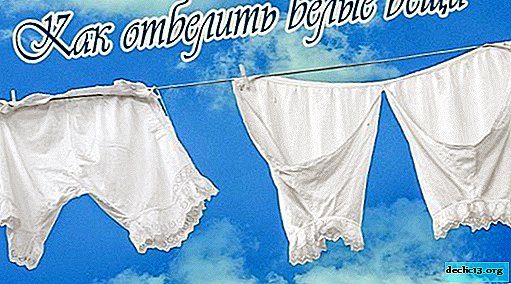The history of the New Year in Russia and in Russia

New Year is the brightest, most beloved and expected holiday. People all over the world celebrate it with pleasure, but few people know the history of the New Year in Russia and in Russia.
Because of traditions, customs and religion, different nations celebrate the New Year in their own way. The process of preparing for the holiday, as well as the memories associated with it, causes a feeling of joy, care, happiness, love and pleasure.
On the eve of the New Year holidays, work is in full swing in every house. Someone is decorating the Christmas tree, someone is cleaning the house or apartment, someone is making a festive menu, and someone is unanimously deciding where to celebrate the New Year.
The history of the New Year in Russia
New Year is the favorite holiday of the inhabitants of our country. They prepare for it, wait with great impatience, cheerfully meet it and for a long time leave it in their memory in the form of pleasant pictures, vivid emotions and positive feelings.
History interests few. But in vain, I tell you, dear readers. She is very interesting and long-lasting.
History until 1700
In 998, Kiev Prince Vladimir introduced Christianity in Russia. After that, the change of years took place on March 1. In some cases, the event occurred on Easter Day. Such a reckoning lasted until the end of the 15th century.
In early 1492, by order of Tsar Ivan III, the beginning of the year began to be considered September 1. In order for the people to respect the “September change of years”, the tsar allowed the peasants and noble nobles to visit the Kremlin that day in search of sovereign mercy. However, the people could not refuse the church calendar. Two hundred years in the country there were two calendars and a constant confusion in the dates.
History after 1700
Peter the Great decided to rectify the situation. At the end of December 1699, he issued an imperial decree according to which the change of years began to be celebrated on the first of January. Thanks to Peter the Great, confusion in changing eras appeared in Russia. He threw back one year and ordered that 1700 be considered the beginning of the new century. In other countries, the reckoning of the new century began in 1701. The Russian Tsar was mistaken for 12 months, so in Russia the change of eras was noted a year earlier.
Peter the Great sought to introduce a European way of life in Russia. Therefore, he ordered to celebrate the New Year on the European model. The tradition of decorating the Christmas tree for the New Year holidays was borrowed from the Germans, for whom the evergreen tree symbolized fidelity, longevity, immortality and youth.
Peter issued a decree according to which decorated pine and juniper branches should be exposed in front of each yard for New Year's holidays. The rich population was obliged to decorate whole trees.
Initially, vegetables, fruits, nuts and sweets were used to decorate conifers. Flashlights, toys and decorative little things appeared on the tree much later. The Christmas tree first flashed with lights only in 1852. It was installed at the Catherine Station in St. Petersburg.
Until the end of his days, Peter the Great made sure that the New Year was celebrated in Russia as solemnly as in European countries. On the eve of the holiday, the king congratulated people, handed gifts from the hands of nobles, presented expensive souvenirs to the favorites, actively participated in fun and festivities at the court.
The emperor arranged gorgeous masquerades in the palace and ordered that New Year's Eve arrange fireworks and fire from cannons. Thanks to the efforts of Peter I in Russia, the celebration of the New Year became secular, not religious.
The Russian people had to go through many changes until the New Year date stopped on the first of January.
The story of Santa Claus
The Christmas tree is not the only desirable attribute of the New Year. There is still a character who brings New Year's gifts. As you might guess, this is Santa Claus.
The age of this kind fairy-tale grandfather exceeds 1000 years, and the history of the appearance of Santa Claus is a mystery to many.
It is not known exactly where Santa Claus came from. Each country has its own opinion. Some peoples consider Santa Claus a descendant of the Dwarves, others are sure that his ancestors are wandering jugglers from the Middle Ages, others consider him Saint Nicholas the Wonderworker.
Video story
The prototype of Santa Claus - St. Nicholas
At the end of the 10th century, the eastern peoples created the cult of Nikolai Mirsky, the patron saint of thieves, brides, sailors and children. He was known for asceticism and good deeds. After his death, Nikolai Mirsky was given the status of a saint.
The remains of Nikolai Mirsky were kept in the eastern church for many years, but in the 11th century Italian pirates robbed it. They transported the relics of the saint to Italy. The parishioners of the church are left to pray for the preservation of the ashes of St. Nicholas.
After some time, the cult of the miracle worker began to spread in Western and Central Europe. In European countries it was called differently. In Germany - Nikalaus, in Holland - Klaas, in England - Klaus. In the image of a white-bearded old man, he moved around the streets on a donkey or horse and distributed Christmas gifts to children from a bag.
A little later, Santa Claus began to appear at Christmas. Not all churchmen liked this, because the holiday is dedicated to Christ. Therefore, Christ began to give out gifts, in the form of young girls in white clothes. By that time, people got used to the image of St. Nicholas the Wonderworker and could not imagine the New Year holidays without him. As a result, grandfather received a young companion.
The robes of this fabulous old man also changed significantly. Initially, he wore a raincoat, but in the 19th century in the Netherlands he was dressed up as a chimney sweep. He cleared the chimneys and dipped gifts into them. By the end of the 19th century, Santa Claus was awarded a red coat with a fur collar. The outfit was fixed to him for a long time.
Santa Claus in Russia
Fans of holiday symbols decided that the domestic Santa Claus should have a homeland. In late 1998, the city of Veliky Ustyug, which is located in the northern part of the Vologda Oblast, was declared its residence.
Some believe that Santa Claus is a descendant of the spirit of the cold of Frost. Over time, the image of this character has changed. Initially, it was an old-bearded old man in felt boots with a long staff and a bag. He handed gifts to obedient children, and brought up the negligent with a stick.
Later, Santa Claus became a kinder old man. He did not engage in educational activities, but simply told the children terrible tales. Later, he refused from horror stories. As a result, the image became only good.
//www.youtube.com/watch?v=VFFCOWDriBw
Grandfather Frost is the key to fun, dancing and gifts, which turns an ordinary day into a true holiday.
The story of the appearance of the Snow Maiden
Who is the Snow Maiden? This is a young girl with a long braid in a beautiful coat and warm boots. She is a companion of Santa Claus and helps him give out New Year's gifts.
Folklore
The story of the appearance of the Snow Maiden is not as long as that of Grandfather Frost. The appearance of the Snow Maiden is due to the old Russian folk traditions. Everyone knows this folk tale.
To the delight of himself, the Snow Maiden was blinded from white snow by an old man with an old woman. The snow girl came to life, was speechless and began to live with the elderly at home.
The girl was kind, sweet and beautiful. She had long blonde hair and blue eyes. Upon the arrival of spring with sunny days, the Snow Maiden began to feel sad. She was invited to take a walk and jump over a large fire. After the jump, she died, as the hot flame melted her.
Regarding the appearance of the Snow Maiden, we can say that its authors are three artists - Roerich, Vrubel and Vasentsov. In their paintings, they depicted the Snow Maiden in a snow-white sundress and a bandage on his head.

















